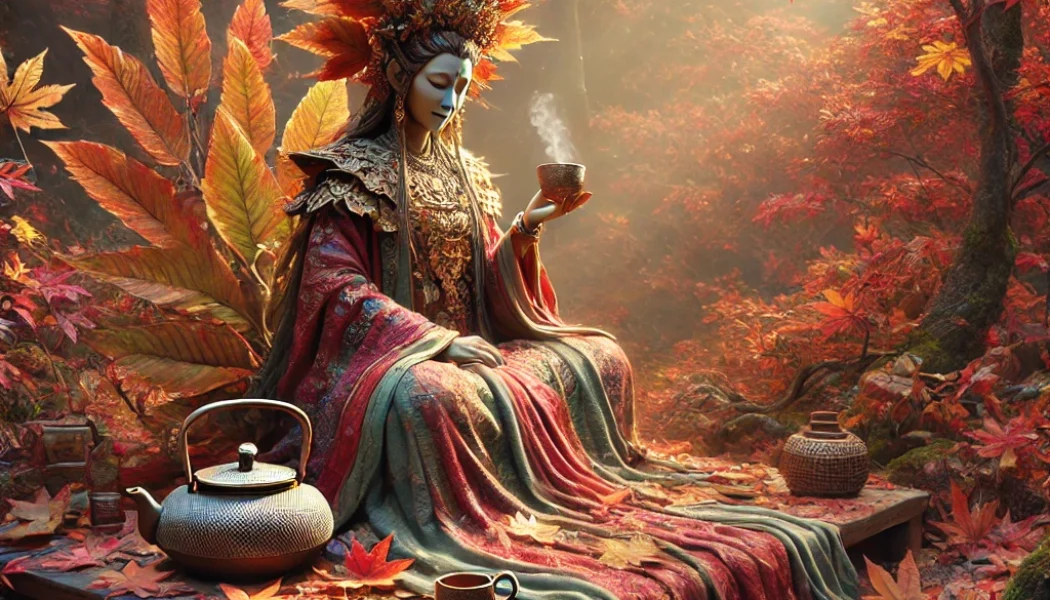As the leaves turn golden and the air grows crisp, autumn unfolds a time of harvest, reflection, and transformation. Throughout history, cultures around the world have celebrated this season by honoring deities who symbolize the cycles of life, death, and renewal. These gods and goddesses are the very essence of fall, embodying the bounty of the earth, the balance between light and dark, and the profound shifts in nature.
Demeter and Persephone: Greek Goddesses of the Harvest and the Underworld
In Greek mythology, the story of autumn is told through the lives of Demeter and her daughter Persephone. Demeter, the goddess of agriculture, is a central figure in the harvest, ensuring the earth’s fertility. However, her myth is deeply intertwined with the coming of autumn through Persephone’s journey to the underworld.
According to legend, Persephone is abducted by Hades, god of the underworld, marking the beginning of fall as she descends into the land of the dead. During her time below, the earth becomes barren, and Demeter’s grief causes the crops to wither. When Persephone returns to the surface in spring, Demeter allows the earth to flourish once more. This myth of loss and renewal perfectly encapsulates the essence of autumn, a time of both endings and preparation for future growth.
Pomona and Ceres: Roman Goddesses of Fruit and Grain
In Roman mythology, two powerful goddesses are honored during the autumn season: Pomona and Ceres. Pomona is the goddess of fruit trees, gardens, and orchards. Her association with apples, a quintessential autumn fruit, makes her a key figure during harvest festivals. Her name is linked to the Latin word pomum, meaning fruit, and her role involves tending to the bounty that ripens in autumn.
Ceres, the Roman counterpart to Demeter, also reigns over the harvest, symbolizing the abundance of grain and crops. She was honored in the Roman festival of Cerealia, a celebration of the fall harvest and the vital connection between the earth and its people.
Mabon: The Welsh God of the Autumn Equinox
From Celtic tradition comes Mabon, a deity who represents youth, strength, and the autumn equinox. Mabon, whose name means “great son,” is often associated with the autumnal balance of light and dark, as the day and night are equal during the equinox. In modern paganism, Mabon is celebrated as a time of reflection and gratitude for the year’s harvest. As the sun’s power wanes, Mabon’s energy symbolizes the transition from the abundance of summer to the dormancy of winter.
Dionysus: Greek God of Wine and Harvest
Though Dionysus is typically known as the god of wine and revelry, he also represents the critical autumnal grape harvest. Festivals in his honor, such as the ancient Greek festival of the grape harvest, took place in autumn, when the fruits of summer’s labor were gathered and fermented into wine. Dionysus embodies both the joy of the harvest and the inevitable decay that follows, making him a fitting symbol of autumn’s dual nature—celebration and decline.
Inari: Japanese God of Rice and Harvest
In Japan, the god Inari is closely tied to the rice harvest, which traditionally takes place in late summer and early autumn. As the deity of fertility, prosperity, and agriculture, Inari is honored during autumn festivals when the rice fields are ready for harvest. Inari’s influence extends beyond rice to all forms of sustenance and wealth, making this deity a key figure during a time when communities give thanks for the year’s bounty.
Osiris: Egyptian God of Death and Rebirth
Autumn’s themes of death and renewal are powerfully symbolized in the ancient Egyptian god Osiris. As the god of the afterlife and resurrection, Osiris represents the cycles of life and death that mirror the seasonal changes. The autumn season, a time when plants die off and prepare for rebirth in spring, reflects Osiris’ myth. Just as the land of Egypt would flood and then retreat, leaving fertile soil behind, Osiris’ story is one of regeneration—a metaphor for the earth’s continual process of renewal.
Lugh: Celtic God of Harvest
Lugh, a deity from Irish mythology, is honored during the festival of Lughnasadh, which marks the beginning of the autumn harvest. Though the festival occurs in early August, it is considered the start of the fall harvest season. Lugh is associated with skill, craftsmanship, and the reaping of crops, making him a central figure in the celebrations surrounding the gathering of grain. As the god who symbolizes both work and the rewards of labor, Lugh presides over the transition from summer’s growth to autumn’s harvest.
Sif: Norse Goddess of Fertility and Grain
In Norse mythology, Sif is the goddess of fertility and agriculture. Her long golden hair is said to represent the fields of grain, particularly at the time of harvest. As the wife of Thor, the protector of the earth, Sif’s connection to the harvest is one of nurturing and abundance, and she is often invoked during autumn as the fields are reaped and stored for winter.
Tlaloc: Aztec God of Rain and Fertility
The Aztec god Tlaloc, ruler of rain and water, is essential to the cycles of agriculture, particularly during the rainy season that leads into the harvest. In Mesoamerican cultures, the autumn harvest follows the rainy season, making Tlaloc an important figure during this time. His ability to bring life-giving rains ensures the success of crops, especially maize, a key component of the autumn harvest.
The Season of Balance and Transformation
Autumn is a time when the natural world reflects the cyclical rhythms of life. From the Greek fields of Demeter to the Aztec rains of Tlaloc, deities of fall remind us of the delicate balance between abundance and decay. As we gather the harvest and prepare for the coming winter, these gods and goddesses offer us stories of renewal, gratitude, and transformation. Whether through myth or modern tradition, the deities of autumn embody the season’s rich symbolism and its eternal message: life continues, even in the face of change.

